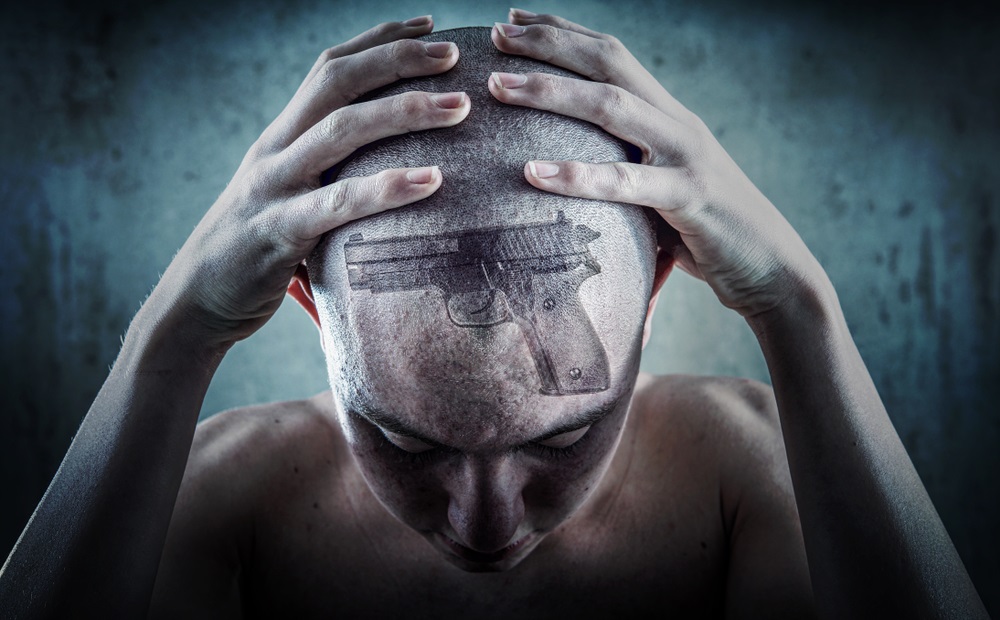![]() Suicide is the second leading cause of death for young people in the United States. More children and teens die by suicide than the next eight leading causes of death.
Suicide is the second leading cause of death for young people in the United States. More children and teens die by suicide than the next eight leading causes of death.
Firearm suicide in particular is a growing crisis impacting young people: Every year nearly 3,000 young people die by firearm suicide. The rate of firearm suicide among youth ages 5 to 19 has increased 82% in the last decade. While suicide rates are increasing most among young people ages 10 to 19, researchers are noting a troubling trend of suicide among children as young as 5 years old.

Renée Hopkins
The coronavirus pandemic has upended life as we know it, disrupting normal routines and cutting off access to many support networks. The COVID-19 crisis — including the guidance designed to slow the spread of the disease and the hardship it is causing so many families and communities — is leaving children and teens especially vulnerable to suicide.
Many young people across the country have not been to school in person for eight months. For many children and teens, that means they have been cut off from their friends and peers for just as long. Socializing is not just fun for young people, it is also crucial for development. Social connections help young people develop a sense of identity and belonging. And just like remote school, experts agree that socializing through screens is no substitute for in-person experiences.
Two big risk factors
Social isolation is a serious risk factor for suicide and depression. Unfortunately, it is not the only risk factor growing during the coronavirus crisis. Across the country, gun sales have hit record highs consistently since March. A recent analysis estimates that Americans have purchased 17 million guns since the start of the pandemic, adding a shocking number of firearms to a country that already has more guns than people.
This spike in gun purchases is concerning because means matter greatly when it comes to suicide. Ninety percent of all suicide attempts with a firearm are fatal. In contrast, just 4% of suicide attempts by other means are fatal.
The mere presence of a gun in the home increases the risk of suicide threefold. This risk is especially high for young people. In a 2019 study, researchers at Boston University found that a 10% increase in household gun ownership is correlated with a more than 25% increase in the youth suicide rate.
These numbers are terrible, but they are not inevitable. Firearm suicide is preventable. Research has shown that removing access to firearms from people in crisis can, and often does, mean the difference between life and death.
Suicide, especially among young people, is often an impulsive act. That means that placing a barrier between a temporary suicidal thought and lethal action can save lives. The vast majority of people — nine in 10 — who survive a suicide attempt do not go on to die by suicide. So as Matthew Miller, a suicide researcher at Harvard, puts it, “If you save a life in the short run, you likely save a life in the long run.”
Historically, families, people in crisis, care providers and law enforcement have not had effective tools to help prevent firearm suicides. Fortunately, that is changing. Washington state, where the Alliance for Gun Responsibility is based, is leading the charge in adopting evidence-based policies to prevent firearm suicide.
Solutions in one state
These are just a few of the crucial suicide-prevention policies in place in Washington:
Extreme risk protection orders: These orders give law enforcement or families, through a court process, a legal pathway to remove guns from an individual who poses a threat to themselves or others. Research has shown that as many as 10 suicides are prevented for every 100 guns removed by extreme risk protection orders.
Firearms and 72-hour involuntary holds: Individuals who have been held for 72 hours under Washington’s Involuntary Treatment Act and who exhibit dangerous behavior are subject to a temporary, six-month prohibition on firearms possession or purchase, helping to ensure that they and their families have time to safely seek treatment.
Voluntary Waivers: Washingtonians can voluntarily request that they be placed on a list of individuals ineligible to purchase firearms. The policy, which only requires individuals to fill out a simple form and present it to a specified court official, empowers individuals who know they may be at risk of suicide to take their safety into their own hands.
Safe storage: In 2018, Washington voters passed Initiative 1639, which includes a safe storage provision that holds irresponsible gun owners legally accountable if their firearm falls into the hands of a child or another prohibited person.
Policies like this make a meaningful difference in preventing firearm suicide and should be adopted across the country. They are proof that elected officials can and should take action to address the firearm suicide crisis.
But the good news is, lawmakers are not the only people who can work to prevent youth firearm suicide. Everyone — especially parents, grandparents, care providers, mentors, teachers and others in regular contact with youth — can talk about the risks of gun suicide. They can also practice and encourage safe firearm storage. Keeping guns locked, unloaded and separate from ammunition creates a meaningful barrier between suicidal thoughts and action. We all have a role to play in addressing this crisis.
If you or someone you know is in crisis, contact the National Suicide Prevention Lifeline: 1-800-273-8255 or text HOME to the Crisis Text Line: 741-741
More information about firearm suicide prevention, including identifying risk factors and seeking help, can be found here: https://preventfirearmsuicide.efsgv.org/
Renée Hopkins is CEO of the Washington state-based Alliance for Gun Responsibility.
